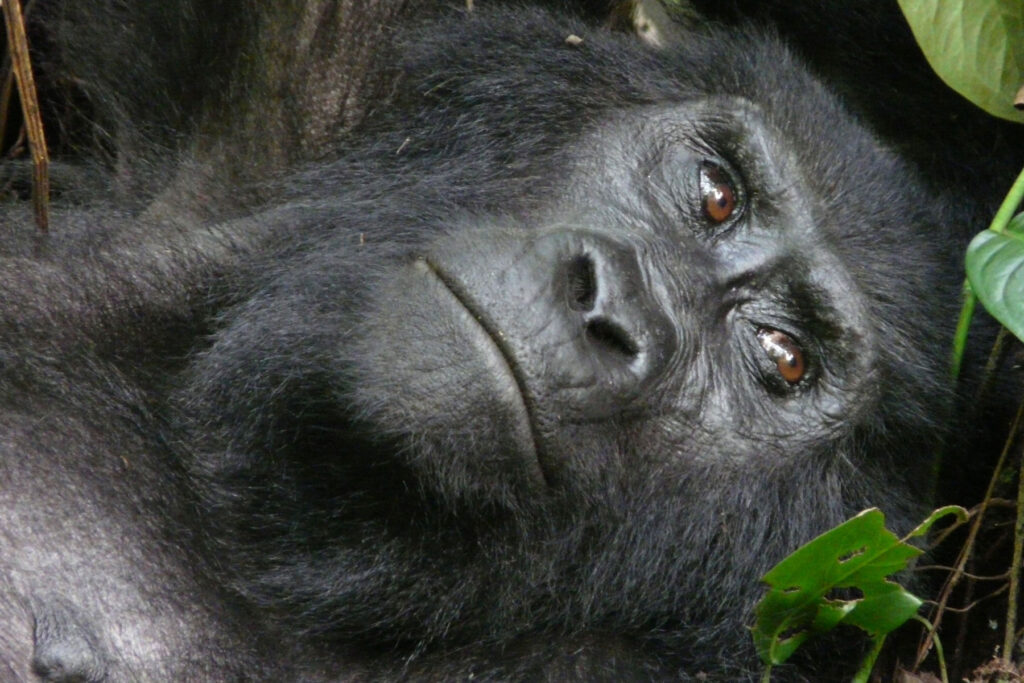Mountain gorillas can only survive in the wild, so trekking into their native forests is your only chance to catch a peek.
You’ll Be Where Half the World’s Mountain Gorillas Live.
There are two gorilla trekking spots in Uganda: Bwindi Impenetrable Forest National Park and Mgahinga Gorilla National Park. Gorillas don’t pay mind to political borders, so populations across the Virungas are relatively fluid. Uganda has an edge, however, since Bwindi alone is home to half of the world’s mountain gorillas.
Bwindi Impenetrable Forest National Park (also called “The Place of Darkness” due to its dense treetops) is an ancient, montane, and lowland forest spanning 128 square miles. The region was named a UNESCO World Heritage site thanks to its incredible biodiversity and the large number of endangered species that call it home.
Mgahinga Gorilla National Park accounts for 13 square miles of the larger Virunga habitat, which stretches across 168 square miles into Rwanda and the Democratic Republic of the Congo. The national park includes three of the eight major Virunga peaks: Mount Gahinga, Mount Muhabura, and Mount Sabyinyo.
You Can Fight Habitat Destruction by Supporting Community Enrichment.
Habitat destruction is the main threat to mountain gorillas. Communities around the parks are heavily populated, and residents have traditionally used the land around national park boundaries for farming or logging.
Since tourism is now Uganda’s most lucrative industry, and the majority of tourists come to see the mountain gorillas, trekkers are encouraged to seek out ways to give back to the communities they visit. One popular option is to hire a porter, who is always a resident and occasionally a reformed poacher. The landscape within the parks is unpredictable and difficult; porters help guide trekkers through river crossings and up steep, muddy inclines.
Another option is to participate in community-led cultural initiatives. In Bwindi village, the Bwindi Bar trains disenfranchised young adults in hospitality through rigorous classes and work experience. Around Mgahinga, elders of the Batwa tribe lead visitors on a forest tour along the Batwa Trail, explaining how their self-sufficient, forest-dwelling tribe traditionally used medicinal plants.
You’ll Find More Affordable Trekking Permits.
There are strict regulations in place to make sure the gorillas stay healthy and wild—starting with the gorilla trekking permit process. Daily viewings of each gorilla group are extremely limited, so visitors should apply well before their desired dates.

